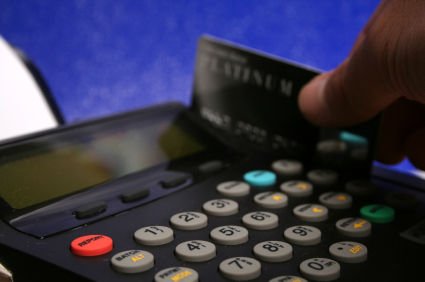Carrying a prepaid debit card can be a convenient alternative to cash or checks while shopping or traveling, and may also make it easier to access money when you don’t have a regular debit card.
You can buy a prepaid debit card just like a gift card, and load it up with whatever amount of money you want so that the funds are available to you when you need to buy something.
However, you can do more than just make retail purchases with prepaid debit cards, such as those issued by RushCard, Green Dot or Netspend.
Here are four other ways to use a prepaid debit card:
#1: Withdraw Cash
Many prepaid debit cards don’t require you to have a checking account, as is the case with traditional debit cards. But some prepaid debit cards are now linked to savings accounts.
So if you need cash from your account, you can track down an ATM machine to withdraw funds using your prepaid card.
You may still incur some fees, but this can be a convenient way to get cash you need when banks are closed or you aren’t close to a bank or credit union.
You can also select “cash back” when you use your prepaid debit card to make a purchase with most retailers, and in the vast majority of cases you won’t incur any fees for this type of withdrawal.
#2: Give One as a Gift
You can give a prepaid debit card as a gift, just like a gift card you might purchase from a retail store.
The primary benefit of giving a prepaid debit card instead of a gift card is that the recipient can use it anywhere that Visa, MasterCard, Discover or American Express cards are accepted – not just at a specific store where you might get a gift card.
With a prepaid card, a recipient can also set up a PIN to use the debit card at an ATM machine.
#3: Make Online Purchases Securely
If you’re worried about sending an eCheck, or tapping cash from a checking account to make an online purchase, you can use a prepaid debit card instead so that your purchase is done securely and protected too.
You can use the debit card for online transactions and file a dispute fairly easily in the event you don’t receive the goods you ordered. This can be a safe way to handle online purchases because you’re often not responsible for any unauthorized activity.
If someone uses your card to make purchases, most prepaid cards promise to limit loss from such unauthorized use. But it’s important to note that this benefit is at the discretion of the prepaid card issuer. In general, prepaid cards don’t enjoy the same protections as bank debit cards, which give you fraud protection that is guaranteed by federal law.
#4: Make Hotel and Travel Reservations
Many people who don’t have a traditional credit card find it difficult to make hotel, flight and car rental reservations online or through a travel agent.
You can use a prepaid debit card to hold your reservation or pay for a deposit, just like a credit card. Just remember to load your card with enough money so that the transaction can go through.
Some hotels, resorts and merchants might require you to add more funds to the card in case you plan to spend money during your trip, so you’ll need to allocate funds accordingly.
Prepaid Debit Cards Vs. Checking Accounts
In case you’re wondering why anyone would choose to use a prepaid debit card when he or she can simply get personal checking accounts, it’s a matter of economics and fiscal habits.
Researchers at Pew Charitable Trusts found that prepaid cards can actually be a smart alternative to business checking accounts – saving many consumers (especially the inexperienced) money compared to the overdraft checking fees and monthly service fees commonly paid by people with bank accounts.
According to data from Pew, prepaid cards do have a lot of fees, including monthly service fees, ATM fees, transaction fees and more. But prepaid card issuers often give customers lots of different ways to avoid those charges. For instance, using direct deposit, viewing accounts online, and loading a median amount of $1,000 onto prepaid cards each month were all tactics that helped consumers avoid prepaid fees.
Also, Pew researchers noted, the dollar amount of prepaid debit card fees are often small compared with the larger fees typically charged when one bounces a check or a customer fails to maintain a certain minimum checking-account balance.
For example, the median service fee for prepaid debit cards was less than $3, Pew found. Meanwhile, the median overdraft fee for checking accounts was $35.
Those with prepaid debit cards also said that prepaid cards help them stick to a budget, because the consumer can’t spend more than is loaded onto the cards, Pew noted.








